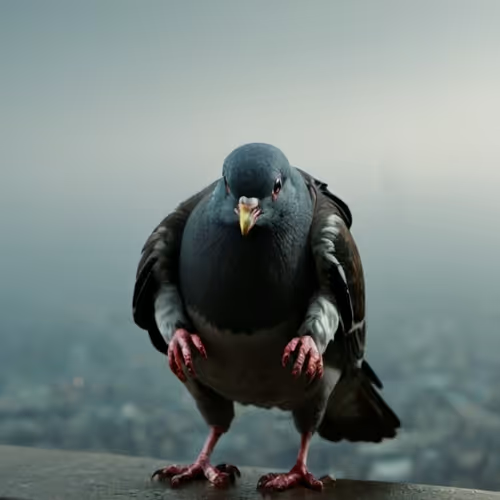In a futuristic city where the streets glowed with neon lights and the line between human and machine was thin, lived a pigeon named Code. Unlike other pigeons, his wings were replaced by hands made of flesh and bone, a bold experiment conducted by a group of rogue scientists.
Code, with his new hands, discovered he had unusual abilities for a pigeon. He could manipulate objects, open doors, and even perform simple tasks that humans did. Fascinated by his new skills, Code began to explore the city, eager to find his place in this world where technology and biology intertwined.
However, Code's life was not easy. He was viewed with suspicion by humans and other animals alike. Some considered him an aberration, while others saw him as a profit opportunity. Greedy corporations tried to capture him to study his unique characteristics and exploit his potential to enhance cybernetic technology.
Tired of being hunted and misunderstood, Code found refuge in a marginalized community of cybernetic and modified beings. There, he found others like him, beings who had been modified by technology in diverse ways and faced similar challenges.
Over time, Code discovered that his hands were not just tools for him to perform tasks but also a form of expression and connection with others. He used his hands to create art, help the needy, and even communicate with other pigeons in a unique way.
Thus, Code found a sense of belonging amidst the city's diversity. He learned to embrace his uniqueness and use his hands of flesh and bone to make a difference in the world, proving that even in a world of advanced technology, humanity could still be found in unexpected places
